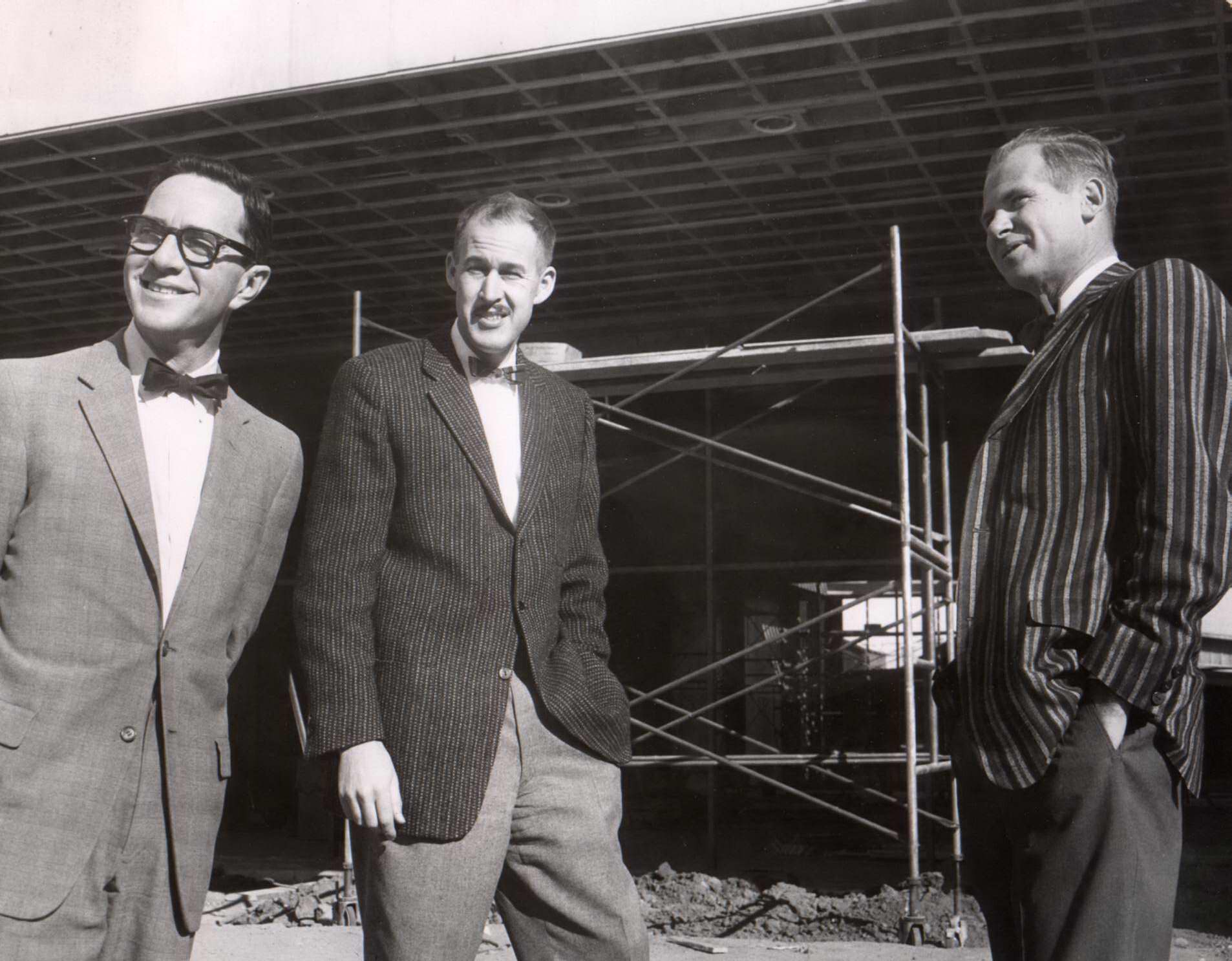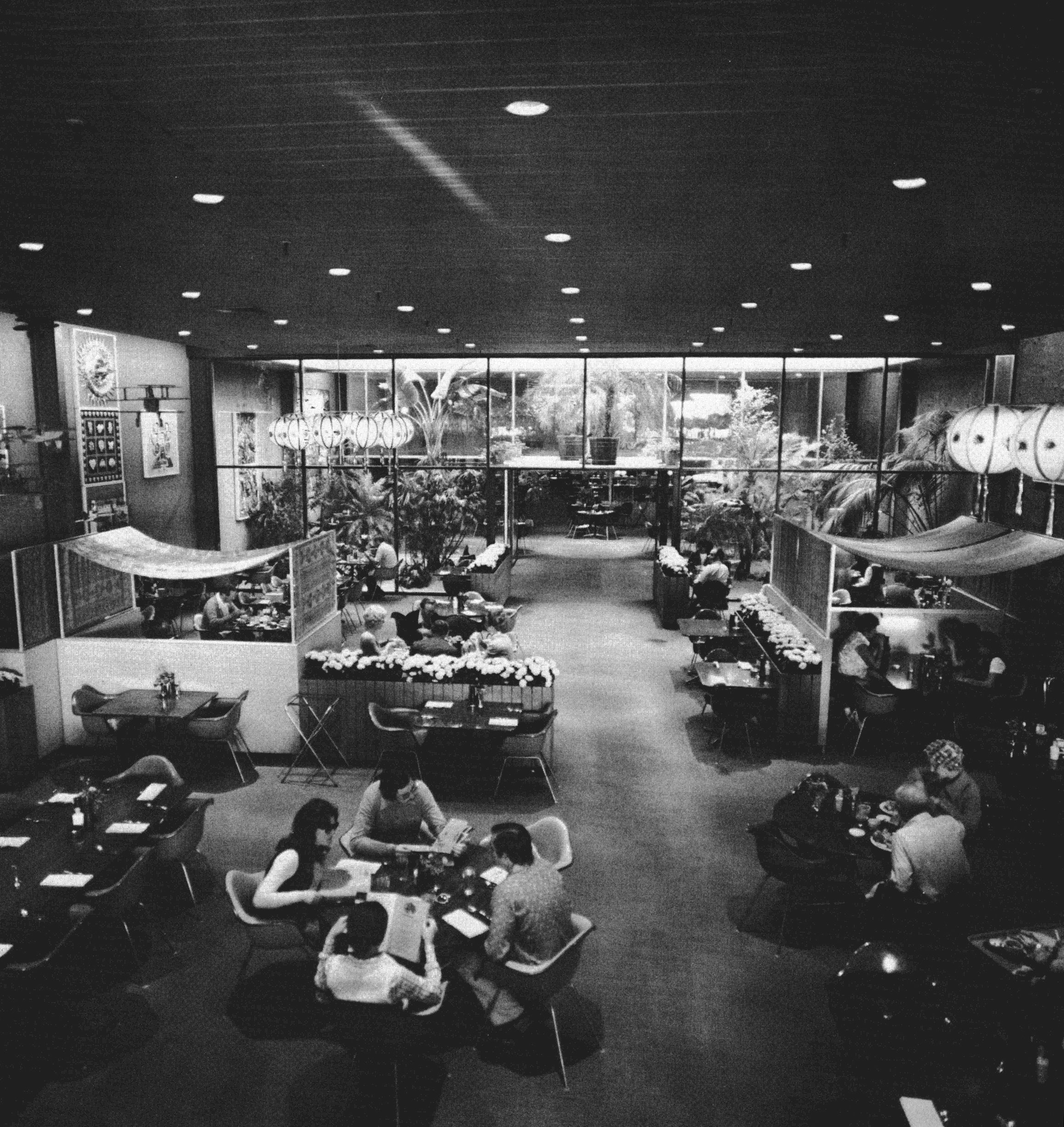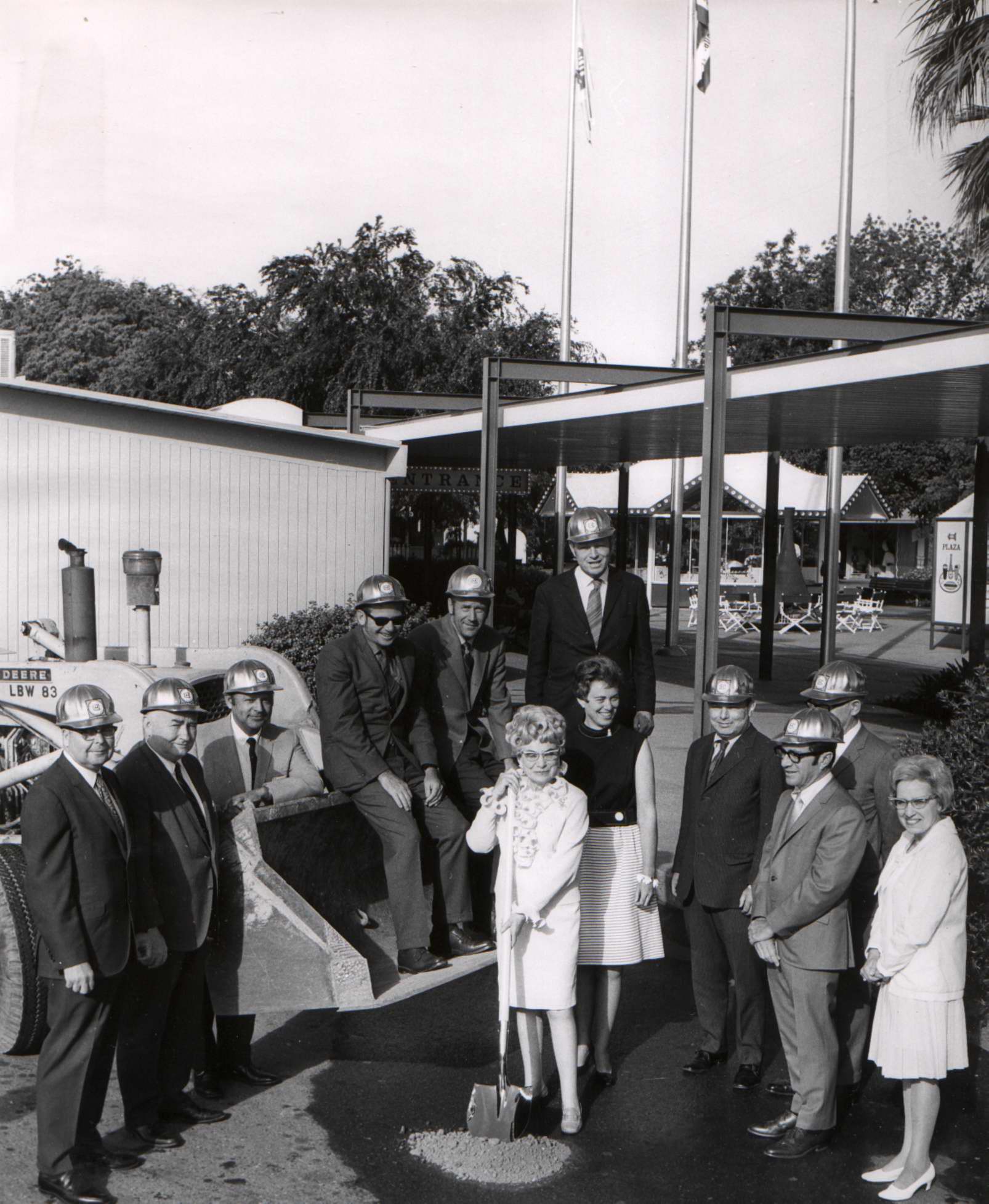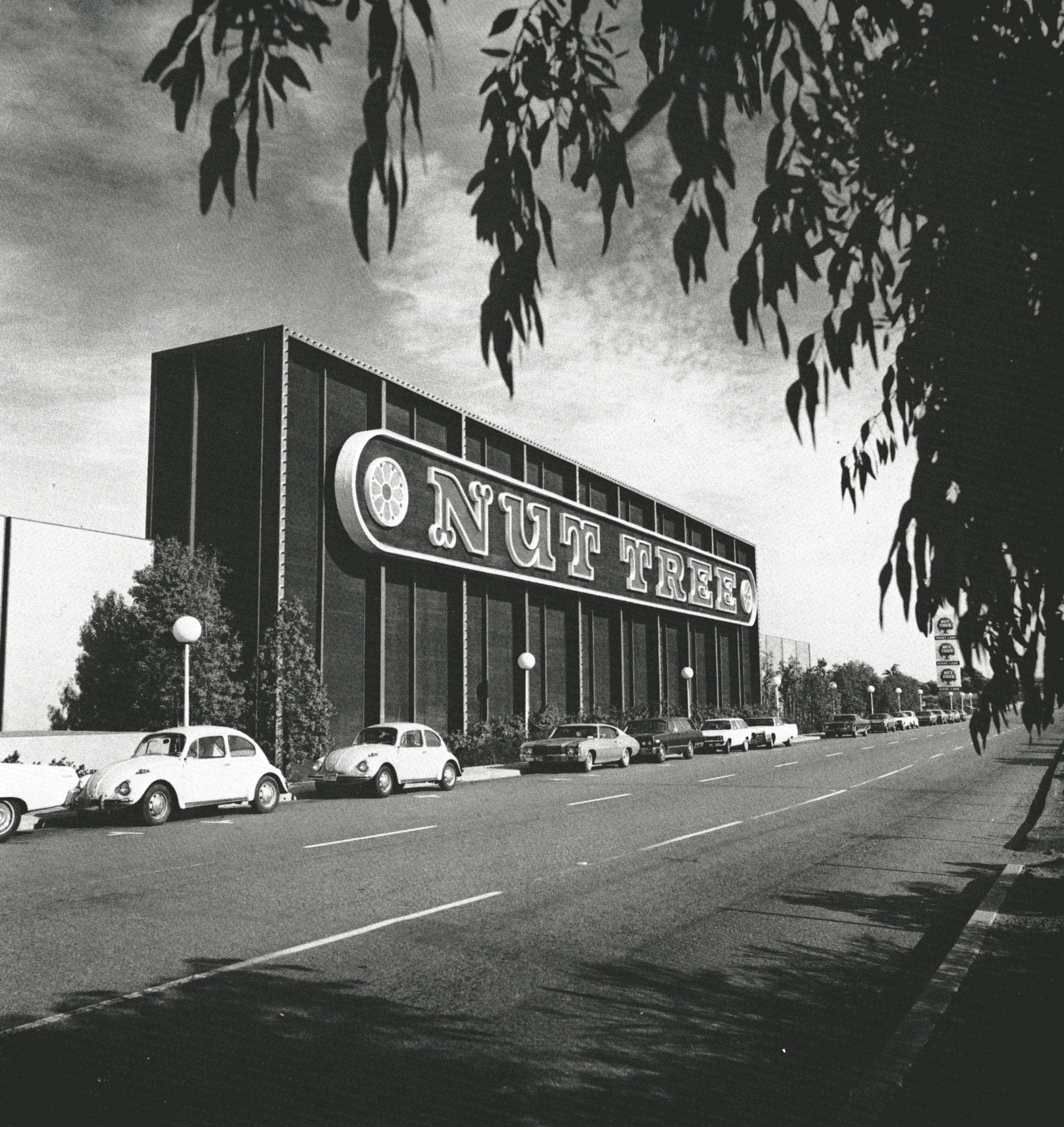Richard Nixon Dined Here, and Other Stories of the Nut Tree
Raquel Urbani
July 1, 2021
The Nut Tree is no doubt Dreyfuss & Blackford’s most well-known, people-oriented success. It was the original farm-to-table destination and this Independence Day weekend marks its 100-year anniversary.
The Nut Tree was a landmark northern California restaurant and recreation complex that was easily recognizable and well known to locals, commuters, and travelers from around the world. Situated on Interstate 80, midway between San Francisco and Sacramento, it once served 1.5 million visitors a year.
The Nut Tree started as a modest roadside fruit stand in 1921 and by the mid-1940s had grown into a smattering of makeshift buildings with an overly-strong western pioneer motif. In 1958, our firm developed a dramatic departure from this origin in the form of an upscale, highly modern restaurant and shops complex. A master plan for incremental expansion was also developed by the firm, and we continued to provide designs for new facilities for over three decades.
In 1965, the American Institute of Architects recognized the outstanding quality of design in this facility with a Merit Award, and a 40th Anniversary Citation for Design Excellence in 1982.
Pioneers of the Power Family
To understand how the Nut Tree became such a monumental destination, one needs to understand the story behind the Power Family; the history of the place goes back several generations.
It all began in 1855 when pioneer Josiah Allison came from Iowa to California in search of gold but instead discovered his knack for farming. Allison owned 225 acres of land in the recently established City of Vacaville. He was doing so well in the farming business he convinced his brother-in-law, Alpha Brown, to move his family there too. During the Brown family’s move out to California via covered wagon, Sallie Fox, Brown’s step-daughter, picked up some black walnuts that had dropped from a tree along the trail. Their covered wagon caravan was attacked at some point, Sallie was wounded by an arrow and Alpha was killed. Once the remaining family arrived in Vacaville, Sallie planted the nuts throughout Allison’s property and over time one particular tree grew very tall and strong — living for nearly 100 years.
In 1906, Josiah Allison’s daughter, Hester, and her husband, Luther Harbison, built a farm house on Josiah’s property for their family. Hester and Luther were the parents of Helen Harbison, who later managed the fruit farm that was left to her father. Helen married Edwin “Bunny” Power and became the matriarch of the Power family, raising three sons and two daughters, all while managing the family’s extensive orchards.
The growing season of 1921 was especially difficult for the Powers – all the figs ripened too quickly in the summer heat. To alleviate the abundance, Helen decided to set up shop underneath that big walnut tree during the Fourth of July weekend. In support of her, Bunny made a sign, put some flowers on a sawhorse table and left her with some things to read to pass the time, in the event no motorists traveling along the Old Lincoln Highway stopped. To both their surprise, business was brisker than either could have imagined and Helen made a whopping $50 on her first day selling figs. And the idea of the Nut Tree farm stand was born.
Pioneers of Farm-to-Table
As the first two decades passed, the Powers had added their own makeshift buildings near the old walnut tree. Eventually, Don Birrell, the director of Sacramento’s Crocker Art Museum, went to work for the Nut Tree as Design Director. As business grew with their brand of “western food,” which included heaping portions, fresh fruits and vegetables, and plate garnishes, the Power’s saw a need for a strategic development plan, so Birrell introduced his friend, architect Albert Dreyfuss to the Power Family.
The building’s master plan was completed in 1954 and was based on a 16-foot modular system of incremental additions, renovations, and replacement of existing facilities.
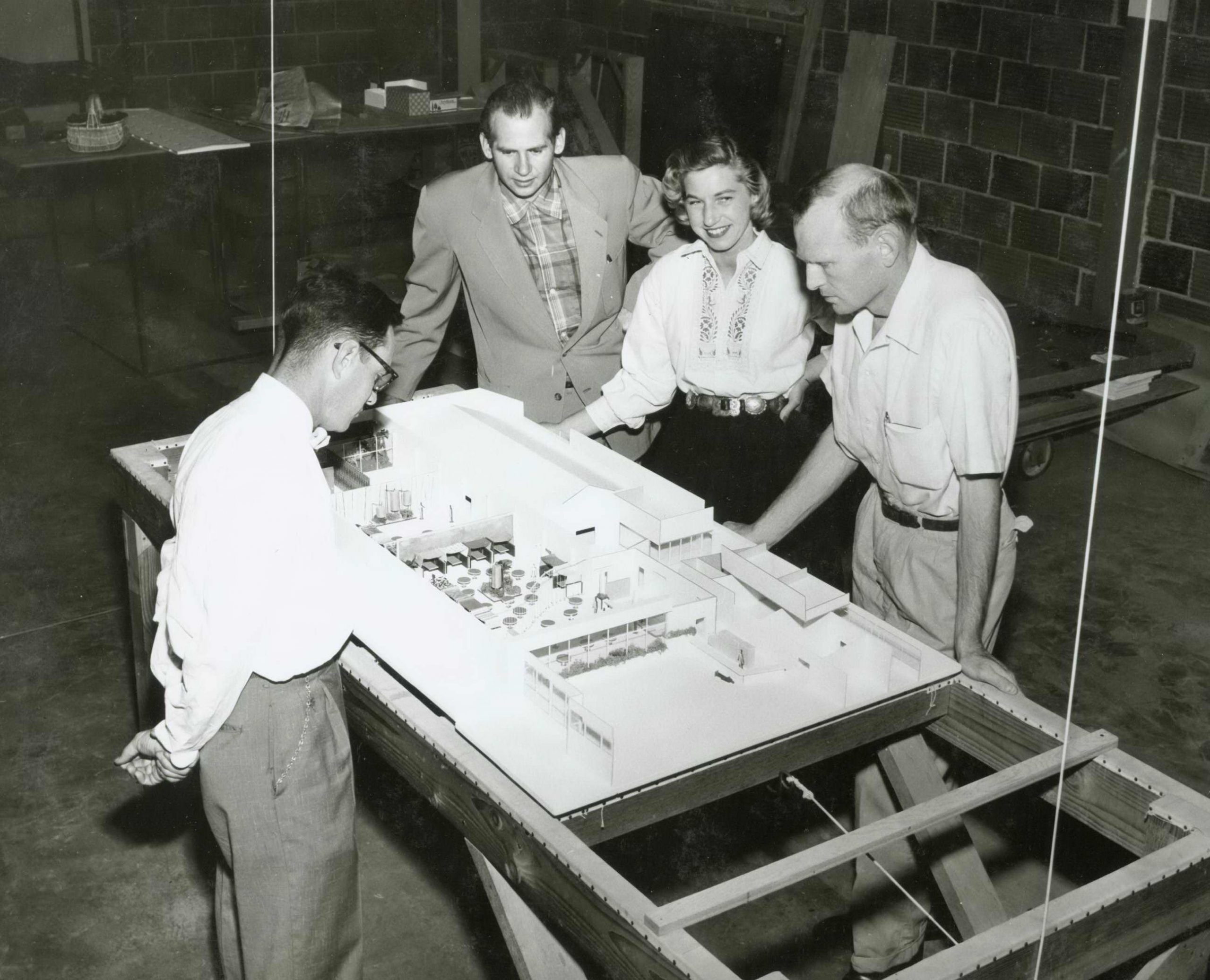
Sophie and Edwin I. Power, Jr., look at a scale model of the Nut Tree complex with Albert Dreyfuss and Leonard Blackford.
The master plan for the ranch included a general aviation airport; miniature railroad running from the airport to the restaurant; original Harbison family farmhouse later restored into a museum, and a plaza for outdoor dining.
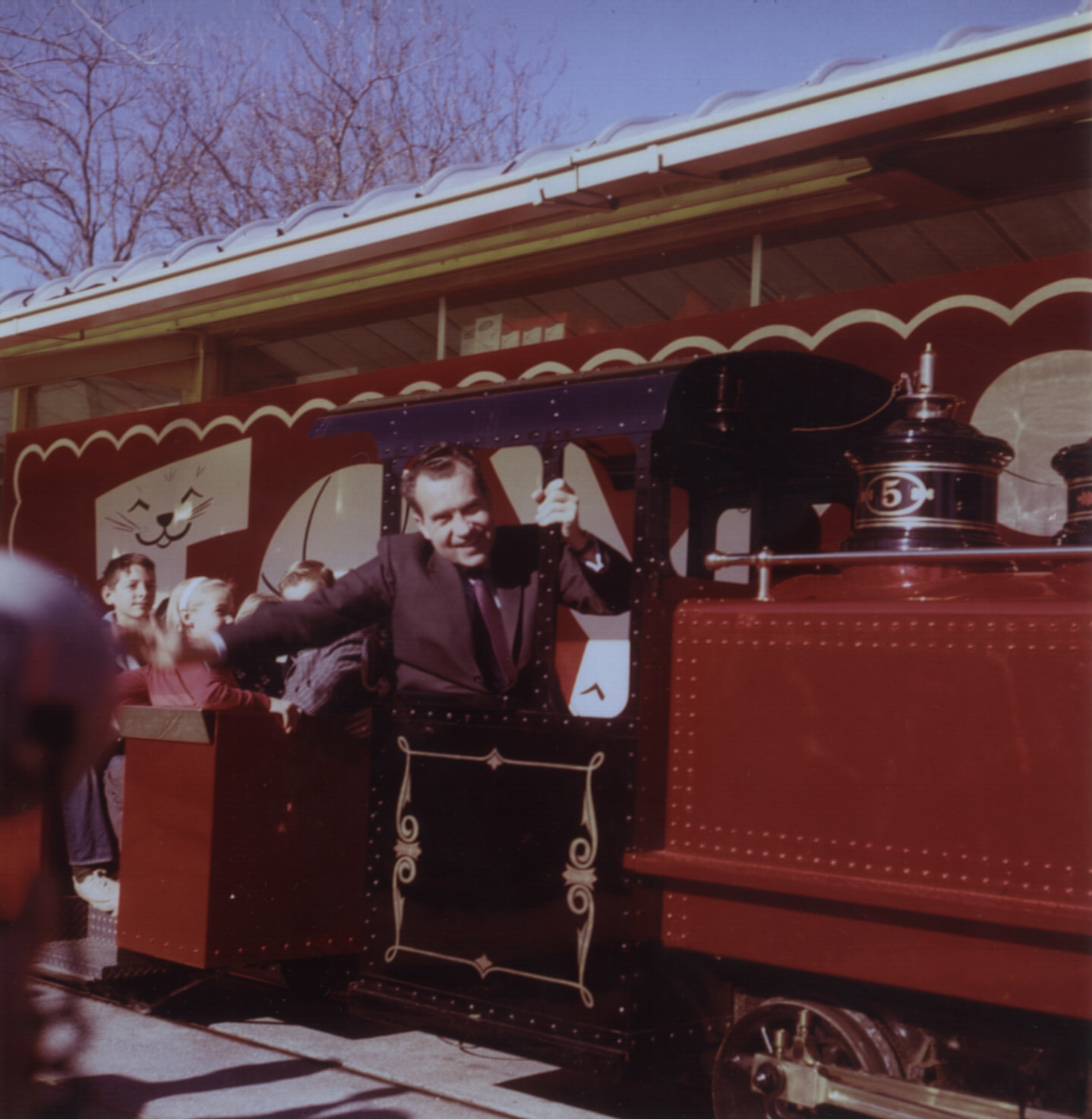
Richard M. Nixon is seen riding the train on the Nut Tree Railroad. Image courtesy Vacaville Museum.
“We created a master plan for everything, from the design of the billboards to landscape architecture, interior design to the way food was arranged on the plate,” Birrell says. “We wanted to create a certain feeling, make people remember us.”
Pioneers of the Fly-In Restaurant
In 1955 Edwin Power Jr. spearheaded the building of the Nut Tree landing strip with us. Many pilots began to use the airport, describing it as one of the most innovative private airports in the nation. It became a model in the industry and was featured in international magazines including a two-page spread in the October 1960 issue of Saturday Evening Post. This gave rise to the concept of “fly-in restaurants.” The Nut Tree was a pioneer in California for this new popular option for traveling to dinner. The sales staff were all licensed by the FAA as radio operators, in order to give incoming pilots landing instructions and reserve a table.
Pioneers of Conscious Expansion
Design work on the project started in 1954 and we worked with Don Birrell on the total experience details.
Construction on the first phase was completed in 1959 and consisted of a new main dining room with a glass aviary (stocked with brightly-colored tanagers), remodeling of the kitchen, employee cafeteria, and a new entry canopy, patio and site landscape. Charles and Ray Eames were commissioned to design the furniture and the art gallery included artist Wayne Thiebaud’s work, little known in in the 1950’s.
In 1962 the United States Postal Service designated this portion of the city as Nut Tree, California complete with its own Post Office. The Nut Tree Inn was planned and even announced, but then later postponed.
From 1962-1966 the dining spaces, retail, kitchen, offices and employee cafeteria were expanded. During construction, while leveling a hill on the property, huge tusks and skull fragments from a mastodon were unearthed and later collected by a UC Davis paleontologist, who also found the remains of a prehistoric wild horse in the same area.
Interstate 80 was completed in 1964 and shortly after in 1965, the Coffee Tree Restaurant opened across the highway from the Nut Tree as the quicker stop along the highway.
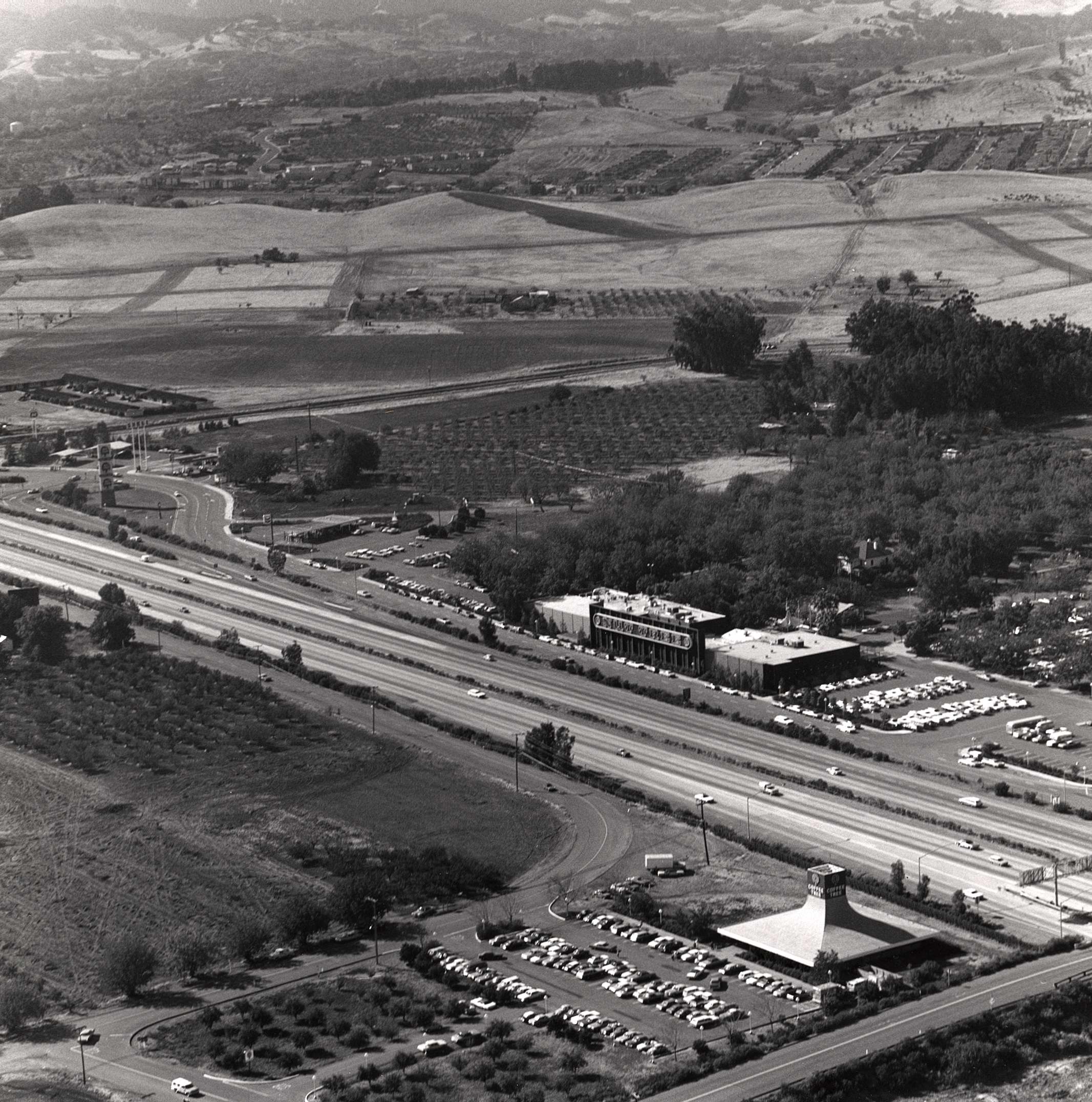
Aerial photo of the Nut Tree complex in Vacaville, California. Coffee Tree restaurant is in the foreground and the Harbison House is visible in the orchards behind the Nut Tree.
The next major phase, completed in 1971, was an addition of five bays and expansion of the sales area, new bakery, new restrooms, administrative offices, expansion of employee cafeteria, and sewing area for employee uniforms. The Nut Tree sign was the front wall of what became a space frame to replace the central sales area. Ten additional bays were later added onto the north east end to enlarge the merchandise area which featured original products created at the Nut Tree, alongside products from Power family trips around the world. A plant nursery was also opened.
In 1971 the Nut Tree’s master plan was updated to fit the changing needs of the facility. Future plans even included a man-made lake, Nut Tree-designed and operated motels and additional restaurants, with a seriously discussed monorail to circle the entire property. Around this same time, the Nut Tree Airport was donated to Solano County and expanded – but still remained usable for pilots of smaller private planes visiting the Nut Tree. In 1974 the Nut Tree was designated a historic Solano County landmark for its “contribution to the growth of Solano County and its place in the California scene.”
“The success of this project, aesthetically and commercially, was the direct outgrowth of our interaction with an articulate, design-conscious and critical client group,” said Albert Dreyfuss.
